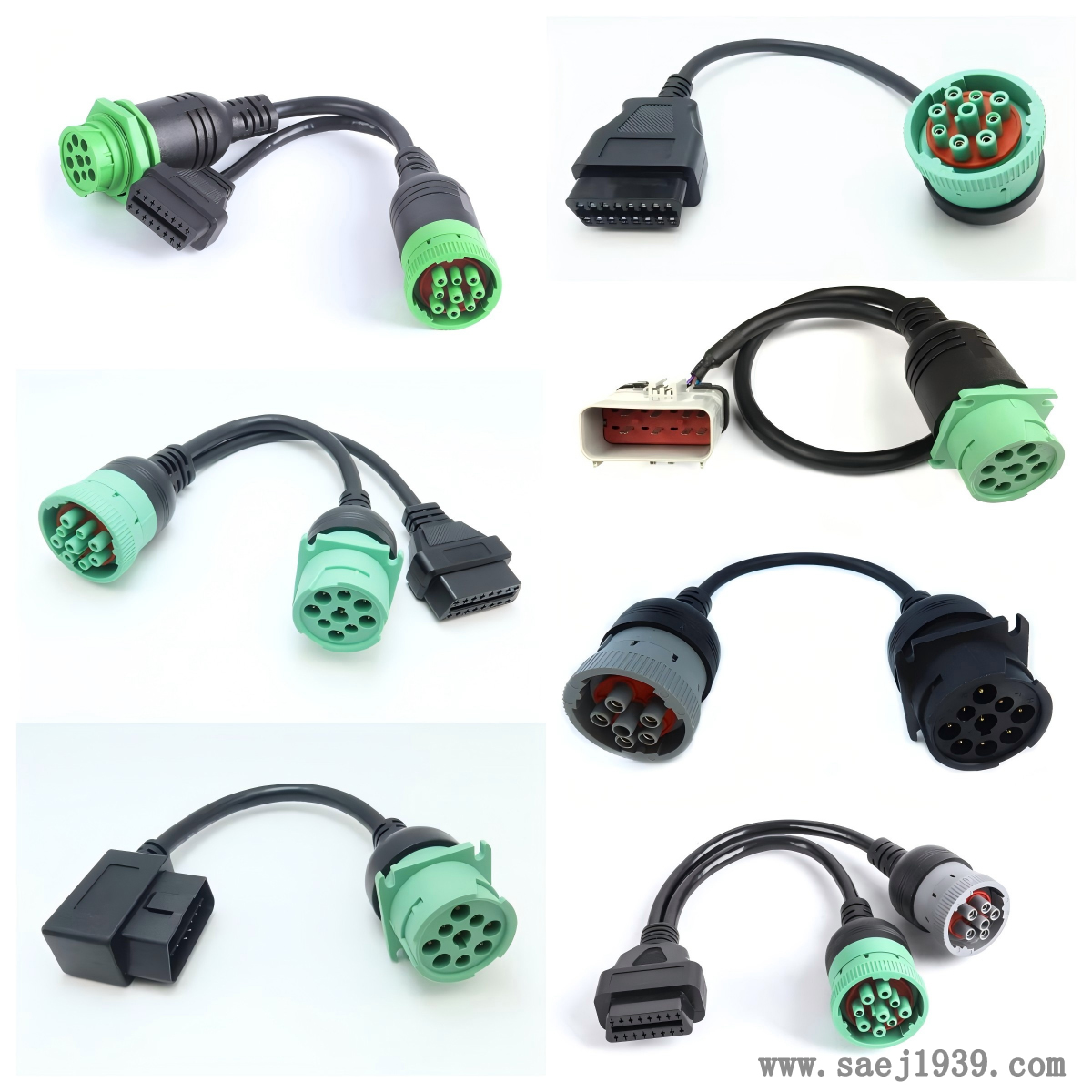Introduce the application scenarios of right angle J1939 to obd2 cable
The right angle J1939 to OBD2 cable has a wide range of applications in various fields such as automotive maintenance, vehicle modification, and transportation management. The following are some of the main application scenarios:
Car Repair and Maintenance
Fault diagnosis: The car repair shop uses this cable to connect professional diagnostic equipment with the vehicle's OBD2 interface, and obtains fault codes and real-time data of various systems such as the vehicle's engine, transmission, ABS, etc. through the J1939 protocol to quickly locate the fault point and develop maintenance plans.
Performance testing: During vehicle maintenance, technicians use this cable to connect testing equipment, monitor the operating parameters of various systems of the vehicle, such as engine speed, water temperature, exhaust emissions, etc., evaluate vehicle performance, and promptly identify potential problems.

Vehicle modification and upgrade
Installation of auxiliary equipment: When car owners or modification factories install electronic devices such as driving recorders, navigation systems, and onboard computers on vehicles, they can use this cable to connect the new device to the vehicle OBD2 interface, and communicate with the vehicle system through the J1939 protocol to obtain vehicle information and expand functions.
Power system upgrade: When modifying the vehicle's power system, such as replacing the engine control unit (ECU) or turbocharger system, this cable needs to be used to connect the debugging equipment to the vehicle OBD2 interface, program and debug the new power system, make it compatible with other systems of the vehicle, and ensure stable performance of the modified vehicle.
Intelligent Transportation and Logistics Transportation
Fleet management: Logistics companies and bus companies, among other fleet managers, can connect the vehicle OBD2 interface to the onboard terminal through this cable, and use the J1939 protocol to collect real-time driving data of vehicles, such as speed, fuel consumption, mileage, etc., to achieve remote monitoring and scheduling management of the fleet, improve operational efficiency, and reduce costs.
Autonomous driving testing: During the development and testing of autonomous driving technology, it is necessary to collect a large amount of vehicle driving data and status information. The right angle J1939 to OBD2 cable can connect the OBD2 interface of the test vehicle to the testing equipment, obtain data from the vehicle chassis, power and other systems, and provide support for the optimization and testing of autonomous driving algorithms.
We chat